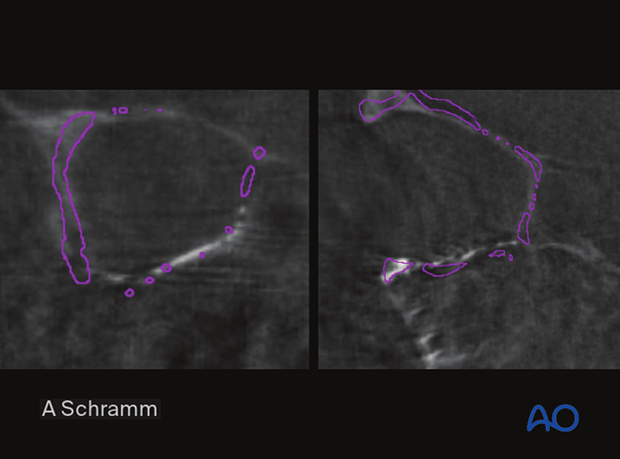CAS: virtual planning and intraoperative imaging (ORIF with orbital reconstruction)
1. Introduction
When using computer assisted surgery (CAS), reduction (and fixation if necessary) is performed according to standard procedures described in the AO Surgery Reference. CAS should be considered an adjunct to surgical treatment.
When treating fractures CAS allows virtual preoperative planning of the desired reconstruction using preoperative CT scans and appropriate software.
Intraoperative imaging combined with image fusion of preoperative and intraoperative CT scans and the virtual plan allows verification of proper reduction.
In complex orbital floor fractures, radiopaque material for orbital wall reconstruction can easily be visualized with intraoperative imaging, allowing intraoperative or postoperative verification of proper reconstruction.
With this technique, insufficient fracture reduction can be identified and corrected, eliminating the need for secondary procedures that may be necessary if only postoperative imaging is performed.
Intraoperative imaging requires an additional 10–15 minutes.
Computer assisted orbital reconstruction planning
Reconstruction of complex orbital wall defects may benefit from preoperative virtual insertion of anatomically preformed orbital implants.
Some complex zygomatico-orbital defects may require patient-specific implants for alloplastic reconstruction of orbital walls. This can be achieved by transferring virtual preoperative planning into CAD-CAM tools to create patient-specific alloplastic implants, or prebending standard implants using stereolithographic models either from the patient’s anatomy or from the virtually preplanned reconstruction.
2. Virtual planning
Preoperative imaging
The preoperative CT scan shows a severely displaced fracture of the zygoma. Complex fractures of the orbital floor, medial wall, and nasal bone are also present.
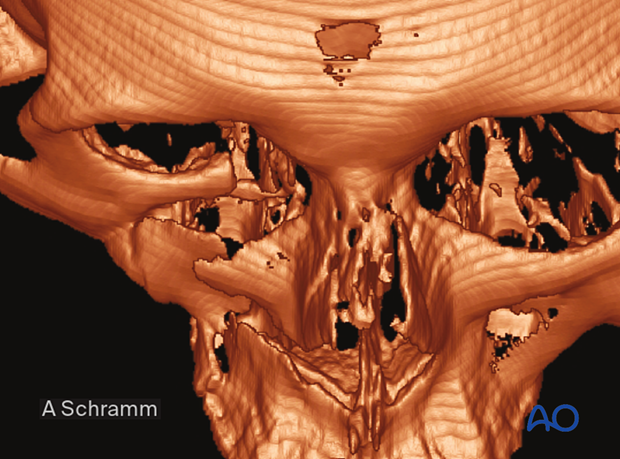
Virtual zygoma reduction
Virtual simulation of the zygoma reduction is performed by mirroring the unaffected contralateral zygoma after auto segmentation. The purple line shows the outer surface of the virtually repositioned zygoma and becomes the surgical goal for reduction.
In this specific case, the virtual zygoma reduction indicates a displaced fracture of the paranasal buttress (as indicated by the arrow in the illustration). This may be missed in the preoperative examination, leading intraoperatively to malpositioning of the zygoma.
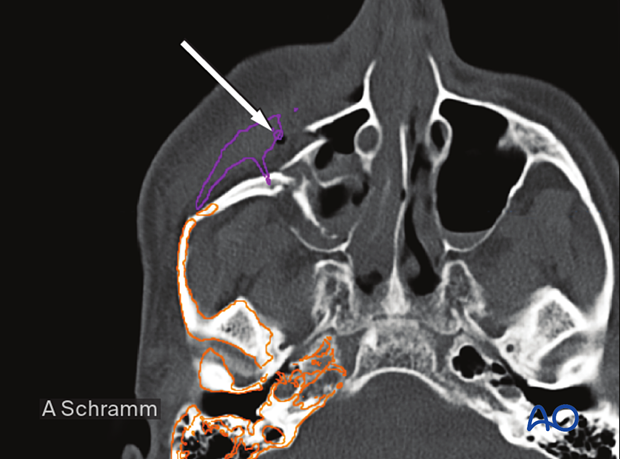
Virtual orbital wall reconstruction
Virtual orbital wall reconstruction is shown in purple. This was achieved by mirroring the unaffected contralateral side after auto segmentation.
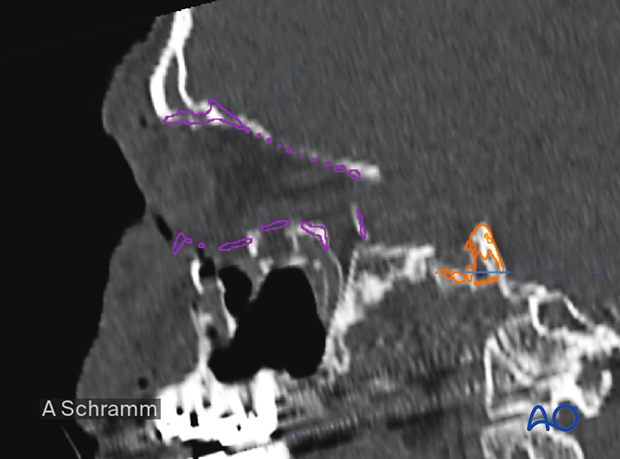
3. Intraoperative assessment of reduction
A CT scan is performed intraoperatively to verify that the zygoma has been appropriately reduced.
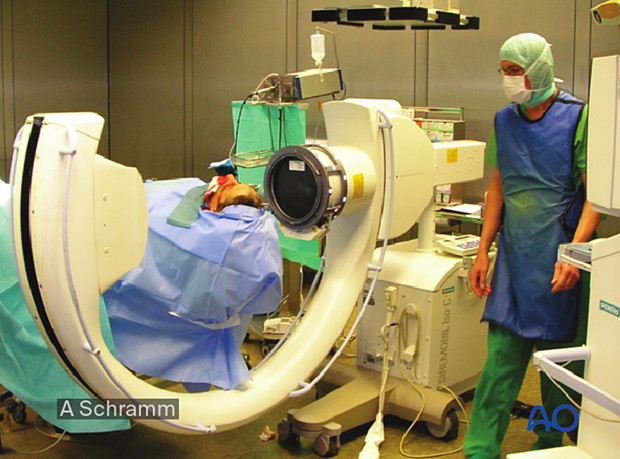
Virtual planning software allows automatic image fusion of preoperative and intraoperative CT scans and the virtual plan to better visualize the achieved reduction.
Note that the reduced zygoma and paranasal buttress fit perfectly in the planned position (purple).
If the zygoma is not properly reduced, corrections must be performed, followed by an additional intraoperative CT scan.
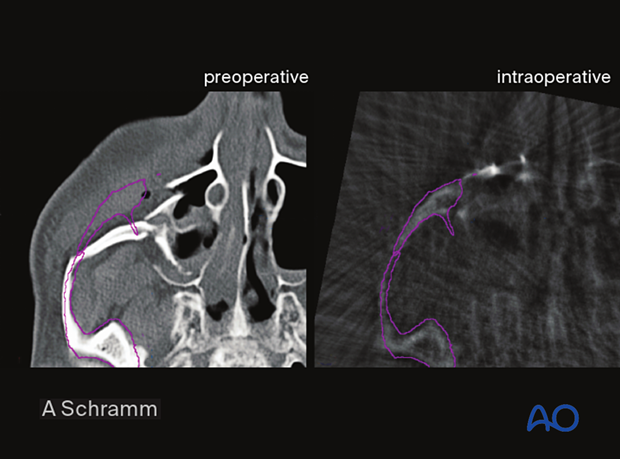
The correct anatomic shape of the inserted titanium mesh can be verified in the intraoperative CT scan when virtual reconstruction in the preoperative CT scan is transferred to the intraoperative scan via image fusion.
Note that the reconstructed orbital floor fits perfectly in the planned position (purple).
If the orbital walls are not properly reconstructed, correction of the mesh position must be performed, followed by an additional intraoperative CT scan.
